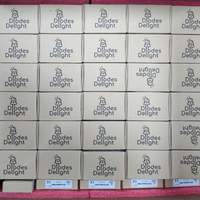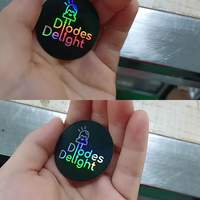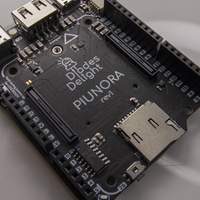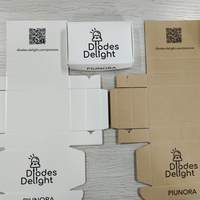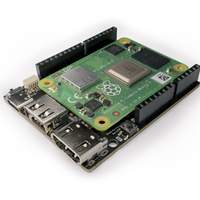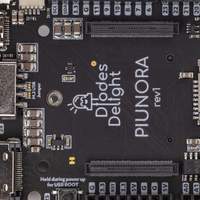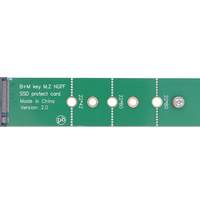Post-Campaign Sales
All campaign orders have been fulfilled and most pre-orders should also have left the warehouse by now! I want to thank you all again for backing the campaign, it would not have been possible without your support. If you were thinking about getting a Piunora, Crowd Supply as of right now still has stock of Pro units and the heatsink kit. Read the full update.
Documentation
Most of you should have received your Piunora by now! The documentation is still a work in progress, but all the crucial things are there to support you. Keep checking it out now and again when you start using Piunora for a project, there will probably be new guides and articles for all aspects of Piunora. Read the full update.
Shipping Soon
Great news! The complete shipment of Piunora and accessories will be on its way to the Mouser warehouse in the coming days. We have completed electrical testing earlier this week, and everything is packed up and ready to go. This is a great time to double check and update your shipping address! Read the full update.
Approaching the Finish Line
It's been a few stressful weeks but we are getting close to the finish line. Like last time there's some good news and some bad news. The good news is that PCBs were delivered to my manufacturer about a week ago. Over the past few weeks, I have mostly been busy dealing with regulatory matters regarding CE, which has been quite stressful to say the least. Timing is not great considering recent and upcoming closures at my manufacturer. I'm sorry things are getting delayed once again, but I'm hopeful we are getting close now. Read the full update.
Mass Production Has Begun
A lot of things have happened since our last update. The good new first: mass production is under way as of last week. So things have not been delayed too badly. Production will take about 4-4.5 weeks. I will then get a few units shipped to me for a last inspection on my side before approving the final shipment to Crowd Supply for distribution to backers. This update also touches on the resolution of our silkscreen issues, Piunora's SIM-card connector footprint, and packaging. Read the full update.
Production Delays
Production is progressing on multiple fronts. I submitted my final design files to my PCBA fab four weeks ago. I've also been in contact with a fab to produce recyclable paper packaging for Piunora, and I just got pictures for the samples that I ordered. Those samples arrived at my main production fab so they can test packing up the final production prototypes once they are ready. Unfortunately, issues with PCB silk screening have forced me to push the estimated ship date back to the first half of October. Thank you for your patience, and see below for more details. Read the full update.
Components & Beta Testers
Our project was fully funded, and we even exceeded our goal! Thank you so much to everyone who backed the campaign. It means a lot to us! We've been very busy over the past few weeks, buying all of the components for the first batch of Piunoras. Initially, it was looking like we might be facing considerable delays due to component shortages, but we managed to secure all of the components we need by finding drop-in replacement for parts that were out of stock. This update also includes a brief update on our beta testers, all of whom have received their Piunoras! Read the full update.
Pre-Production Boards
First off, thanks again for all your support. We are very close to reaching our funding goal! So, if you were planning on getting a board...now is the time :) This post also includes pictures of the pre-production boards that I just received from my CM and updated information about our estimated shipping schedule. Read the full update.
Hackster Cafe
Just a short update to let you know that I was on Hackster Cafe today at 10 AM PDT / 7 PM CEST I talked about Piunora and other projects I've done in the past. You can check it out at https://www.youtube.com/watch?v=WT6lvuTxpYw Read the full update.
Machine-Learning Demo
In this update I want to show you how easy it is to create custom machine learning models for your Piunora using tools like Edge Impulse. Edge Impulse recently added support for the Raspberry Pi 4 and, along with it, the Compute Module 4. In fact, you don't need anything but your Piunora for the entire workflow covered in this update! Read the full update.
Pre-Release Schematic
Just a quick little update to let you know that I uploaded the schematic for our current pre-release board to Piunora's hackaday.io project page. We thought it might help answer some of the questions that our more curious users have been asking. Read the full update.
Prototyping Can Be Fun & Easy!
There are some really cool things you can do when you combine an electronics dev board with a Linux SoC! Today, I want to show you how easy it is to prototype with Piunora by making a sensor-based game controller. In the demo below, we are using Adafruit Blinka (a library that enables CircuitPython code on Linux) and an Adafruit VCNL4040 distance sensor attached by a single cable to Piunora's Qwiic/Stemma-QT connector. No breadboards or soldering required! Read the full update.
Introducing the Piunora M.2 B-Key 2280 Extender
I have received a lot of requests for ways to support long, 2280 M.2 devices. While Piunora is small—and therefore only supports up to 2242 devices in its native form factor—I love seeing people come up with cool hacks, and I want to help out however I can. (One such request was for a PCI-e-to-4x-RS232 adapter. Who knew that was even a thing!?) Anyway, in response to these requests, I have added an adapter board to the campaign. Read the full update.
It Begins!
I'm excited to announce that the crowdfunding campaign for Piunora has begun! This has been a thrilling journey for me. It all started with a little weekend project back in December 2020 that ended up with me starting a side business—Diodes Delight—and developing Piunora into a real product. Read the full update.
